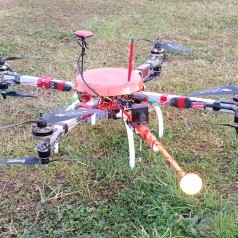analog controlled pwm fan driver

simple pwm controlled fandriver
This fandriver is still based on the old analogue way.
A transistor is used as a temperature sensor. The configuration used is also used to control the quiescent current in class AB amplifiers.
The use of a single diode is also possible but has the disadvantage that the sensitivity is half.
By using a TO126 transistor, such as the BD135/6, easy installation and good thermal contact with a heatsink are possible.
The voltage across the sensor is amplified in opamp 1 and applied to opamp2 which is operating as an astable multivibrator. By controlling the voltage at the + input of opamp2, the duty cycle of the astable multivibrator is varied.
With the potmtr (R1) the 'opamp1' output voltage is set to 0V with 'cold sensor'. D3 ensures that the multivib is not affected. The output of the multivib is then a block with a duty cycle of about 10%.
Increasing the temperature of the sensor will also increase the output voltage of opamp 1, thus affecting the multivib so that the duty cycle increases to about 90%
At the output there is a choke and a freewheel diode. This has the effect that the fan is more quiet.
See the circuit. On the pcb there are some decoupling capacitors that are not shown in the circuit.
A transistor is used as a temperature sensor. The configuration used is also used to control the quiescent current in class AB amplifiers.
The use of a single diode is also possible but has the disadvantage that the sensitivity is half.
By using a TO126 transistor, such as the BD135/6, easy installation and good thermal contact with a heatsink are possible.
The voltage across the sensor is amplified in opamp 1 and applied to opamp2 which is operating as an astable multivibrator. By controlling the voltage at the + input of opamp2, the duty cycle of the astable multivibrator is varied.
With the potmtr (R1) the 'opamp1' output voltage is set to 0V with 'cold sensor'. D3 ensures that the multivib is not affected. The output of the multivib is then a block with a duty cycle of about 10%.
Increasing the temperature of the sensor will also increase the output voltage of opamp 1, thus affecting the multivib so that the duty cycle increases to about 90%
At the output there is a choke and a freewheel diode. This has the effect that the fan is more quiet.
See the circuit. On the pcb there are some decoupling capacitors that are not shown in the circuit.






Updates van de auteur
jawi 7 jaar geleden
When assembling the print, I looked at the different components, and in particular the influence of the different component values.
To get a good impression of the characteristics of the circuit I made a simulation with TINA-TI.
I was curious about the behavior of the pwm modulator as a function of the control voltage, the section around ic2 (U1.B) of the first figure.
This section is shown in Figure 3a, Figure 3b shows the characteristic.
This shows that between the duty cycle and the control voltage is a more linear relationship, but the frequency has a completely different course.
In Figures 4a, 4b and 5a, 5b, the results of other component values are visible.
The shape of the characteristics remains quite right but the frequency is higher and the difference in duty cycle has also increased.
figuur-4-b.jpg (35kb)
figuur-4-a.jpg (79kb)
figuur-3b.jpg (40kb)
figuur-3a.jpg (90kb)